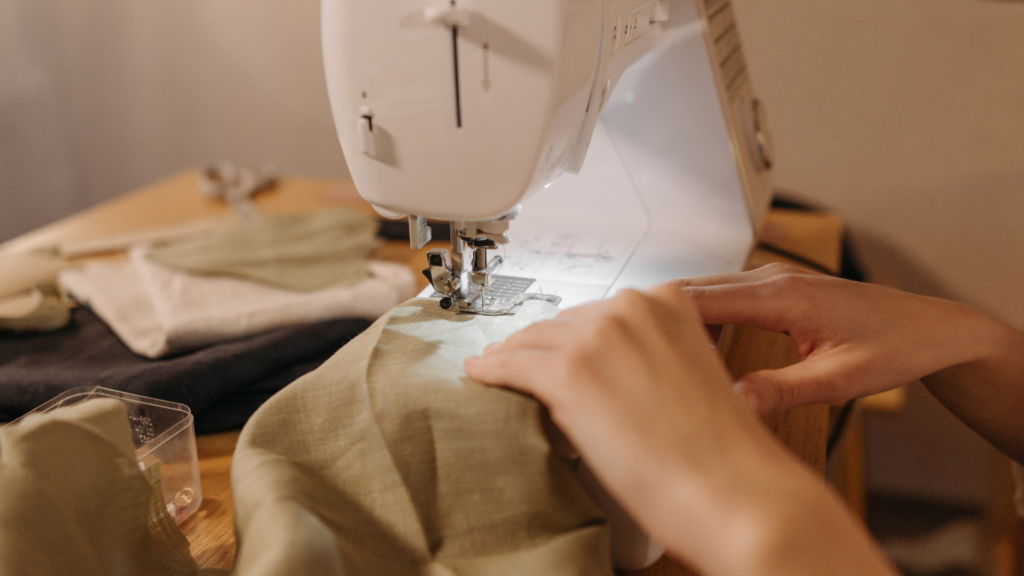Understanding Sustainable Fashion
The Importance of Eco-Friendly Practices
In sustainable fashion, the importance of eco-friendly practices cannot be overstated.
It’s not just about creating clothing; it’s about making a positive impact on the environment.
As a fashion enthusiast, I have witnessed the shift towards sustainability in the industry, with more brands realizing the significance of reducing their carbon footprint.
By implementing eco-friendly practices such as:
- using organic materials
- reducing waste
- and recycling old pieces
these brands are not only staying relevant but also contributing to a greener future for fashion.
Key Principles of Sustainable Fashion
When it comes to sustainable fashion, several key principles guide brands towards eco-conscious decisions.
As someone passionate about fashion and the environment, I believe that these principles are crucial for creating a more sustainable industry.
From sourcing materials ethically to ensuring fair labor practices, these principles ensure that every aspect of the fashion supply chain aligns with sustainability goals.
As brands focus on transparency, innovation, and longevity, they set a positive example for the future of fashion, inspiring others to follow suit in this eco-friendly movement.
The Rise of Eco-Friendly Brands
Shift in Consumer Behavior
When discussing the rise of eco-friendly brands, it’s crucial to acknowledge the significant shift in consumer behavior towards sustainable fashion.
Consumers are increasingly demanding transparency, ethical practices, and environmentally friendly products from fashion brands.
This shift has pushed companies to reevaluate their production processes and sourcing methods to align with consumer values.
As a result, many brands have started incorporating eco-friendly initiatives into their core business models to meet the growing demand for sustainable fashion options.
The Impact on the Fashion Industry
The impact of eco-friendly brands on the fashion industry is undeniable.
These brands are not only setting a new standard for environmental consciousness but also influencing the entire industry to move towards sustainability.
By prioritizing ethical practices, reducing waste, and promoting transparency, eco-friendly brands are reshaping the way fashion companies operate.
This shift is not only beneficial for the environment and the well-being of communities but also for the long-term sustainability of the fashion industry as a whole.
As more brands embrace eco-friendly practices, the fashion industry is gradually moving towards a more sustainable and responsible future.
Noteworthy Sustainable Fashion Brands
Pioneers in the Movement
Pioneering sustainable fashion brands set the standard for eco-friendly practices in the industry.
They lead by example, demonstrating the feasibility and benefits of incorporating sustainability into fashion.
Brands like Stella McCartney and Patagonia are at the forefront, championing ethical sourcing, cruelty-free materials, and transparency in their supply chains.
These brands not only create fashionable and high-quality products but also prioritize environmental and social responsibility in every aspect of their operations.
Innovations in Sustainability
Innovative sustainable fashion brands are constantly pushing the boundaries to implement new eco-friendly solutions.
Companies like Reformation and Eileen Fisher are revolutionizing the industry with their innovative approaches to sustainability.
They experiment with cutting-edge eco-materials, embrace circular fashion models, and initiate programs for garment recycling and take-back schemes.
By blending creativity with sustainability, these brands pave the way for a more environmentally conscious fashion landscape, inspiring others to follow suit in creating a greener future for the industry.
Sustainable Materials and Production Processes
1. Organic and Recycled Materials
In sustainable fashion, the use of organic and recycled materials plays a pivotal role in reducing environmental impact.
Organic fabrics such as:
- organic cotton
- hemp
- bamboo
are cultivated without synthetic pesticides or fertilizers, promoting soil health and biodiversity.
For example, brands like People Tree and Toad&Co prioritize organic cotton in their collections to support sustainable farming practices and minimize chemical inputs in the production process.
Recycled materials, on the other hand, involve repurposing existing materials like plastic bottles, textile waste, and discarded fabrics to create new garments.
Companies like Patagonia and Outerknown are at the forefront of using recycled polyester and nylon in their outerwear, contributing to waste reduction and conservation of natural resources.
By incorporating these materials into their designs, fashion brands not only reduce landfill waste but also demonstrate a commitment to circularity and resource efficiency.
2. Ethical Labor and Manufacturing
Ethical labor practices and transparent manufacturing processes are essential aspects of sustainable fashion.
Brands like People Tree and Mara Hoffman prioritize fair wages, safe working conditions, and community empowerment in their supply chains.
By partnering with Fair Trade certified factories and artisans, these brands ensure that garment workers are treated ethically and that social responsibility is integrated into every stage of production.
Moreover, companies such as Pact and Indigenous are known for their transparent manufacturing processes, providing visibility into their supply chain from raw materials to finished products.
They adhere to rigorous standards for labor rights, environmental sustainability, and fair trade, setting a precedent for accountability and traceability in the industry.
By instilling trust and accountability in their practices, these brands set a benchmark for promoting ethical labor and responsible manufacturing in sustainable fashion.
Challenges and Criticisms
The Reality of ‘Greenwashing’
As I delve deeper into the sustainable fashion landscape, I cannot ignore the prevalent issue of ‘greenwashing.’
This deceptive practice involves companies misleading consumers by making unsubstantiated or exaggerated claims about their products’ environmental benefits.
It’s essential to remain vigilant against greenwashing and scrutinize brands’ sustainability claims to ensure they align with concrete actions and transparent practices.
By holding companies accountable and demanding authenticity, we can foster a truly sustainable fashion industry that prioritizes genuine environmental impact over mere marketing strategies.
Overcoming Obstacles for Smaller Brands
Navigating the sustainable fashion arena can be particularly challenging for smaller brands with limited resources and influence.
These brands often face hurdles such as higher production costs for eco-friendly materials, limited access to sustainable supply chains, and lower visibility in a market dominated by larger, more established players.
However, with determination and strategic partnerships, small brands can carve out their niche in the eco-friendly movement.
Collaborating with ethical manufacturers, sourcing locally to reduce carbon footprint, and leveraging innovative marketing techniques can help smaller brands overcome obstacles and establish their presence in the sustainable fashion space.
By staying true to their values and engaging with conscious consumers, smaller brands can drive positive change and contribute to a more sustainable future for the fashion industry.
The Future of Fashion
Technological Advancements
Innovative technologies have been pivotal in propelling the sustainable fashion movement forward.
Advancements in fabric development, such as the creation of lab-grown materials like Piñatex and Muskin, have revolutionized the industry.
These sustainable alternatives to traditional textiles are not only eco-friendly but also versatile and durable, meeting the demands of both consumers and brands.
Technology has also played a critical role in improving supply chain transparency.
Blockchain, for instance, enables consumers to trace the entire lifecycle of a garment, ensuring authenticity and ethical production practices.
By leveraging artificial intelligence and data analytics, brands can optimize their production processes, minimize waste, and make informed decisions towards sustainability.
The Role of Consumers and Policy Making
Consumers wield significant influence in shaping the future of fashion.
An increasing awareness of environmental issues has led to a rise in demand for sustainable products.
By making conscious buying choices and supporting brands with eco-friendly practices, consumers drive the market towards sustainability.
This shift in consumer behavior has prompted brands to prioritize ethical and eco-conscious initiatives.
Policy making also plays a crucial role in pushing the fashion industry towards sustainability.
Regulations and incentives that promote eco-friendly practices incentivize brands to adopt sustainable measures.
Government policies can drive systemic change by setting standards for production, waste management, and ethical labor practices.
Collaborations between policymakers, industry stakeholders, and environmental organizations are essential for fostering a regulatory environment that encourages sustainable fashion practices.



 Patrick Dale (Author & Investigative Reporting Lead)
Patrick Dale is an author and Investigative Reporting Lead at The Vital Insight Hub. With a talent for uncovering hidden stories and digging deep into social and economic issues, Patrick heads the investigative team, bringing critical stories to light. His passion for truth and justice drives his work, making him an essential part of the newsroom’s commitment to impactful journalism.
Patrick Dale (Author & Investigative Reporting Lead)
Patrick Dale is an author and Investigative Reporting Lead at The Vital Insight Hub. With a talent for uncovering hidden stories and digging deep into social and economic issues, Patrick heads the investigative team, bringing critical stories to light. His passion for truth and justice drives his work, making him an essential part of the newsroom’s commitment to impactful journalism.
